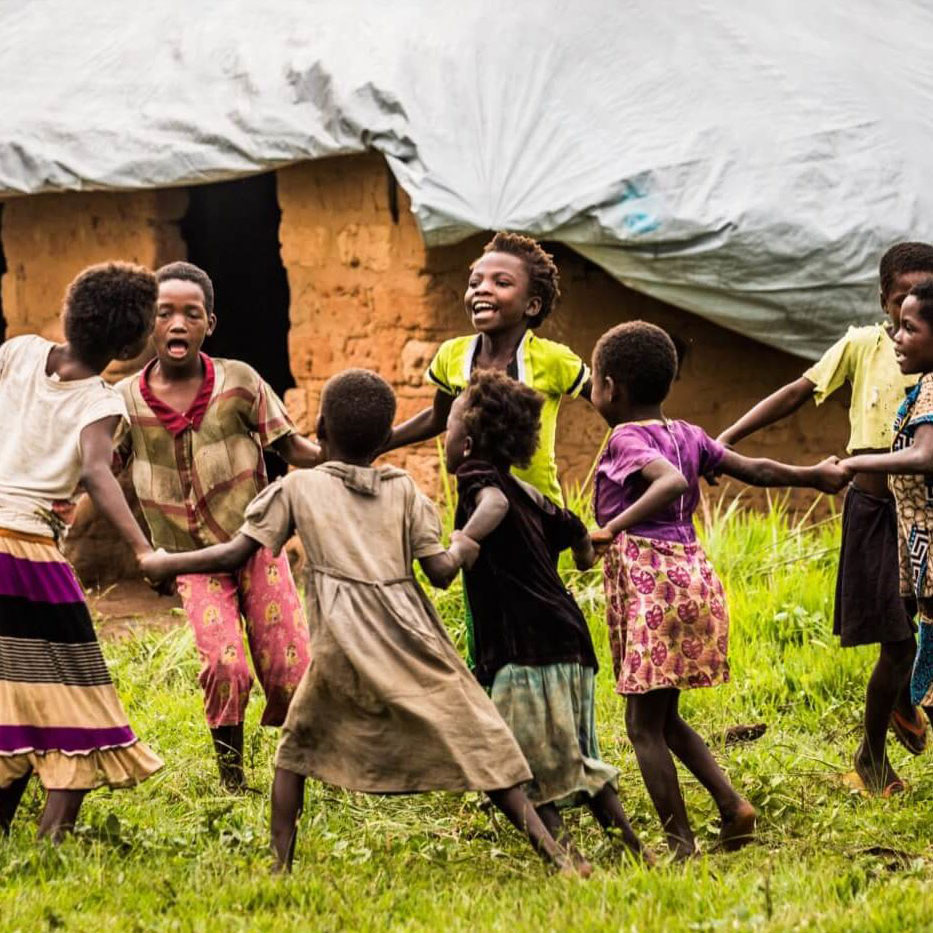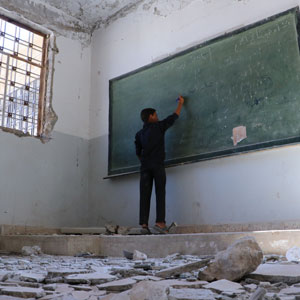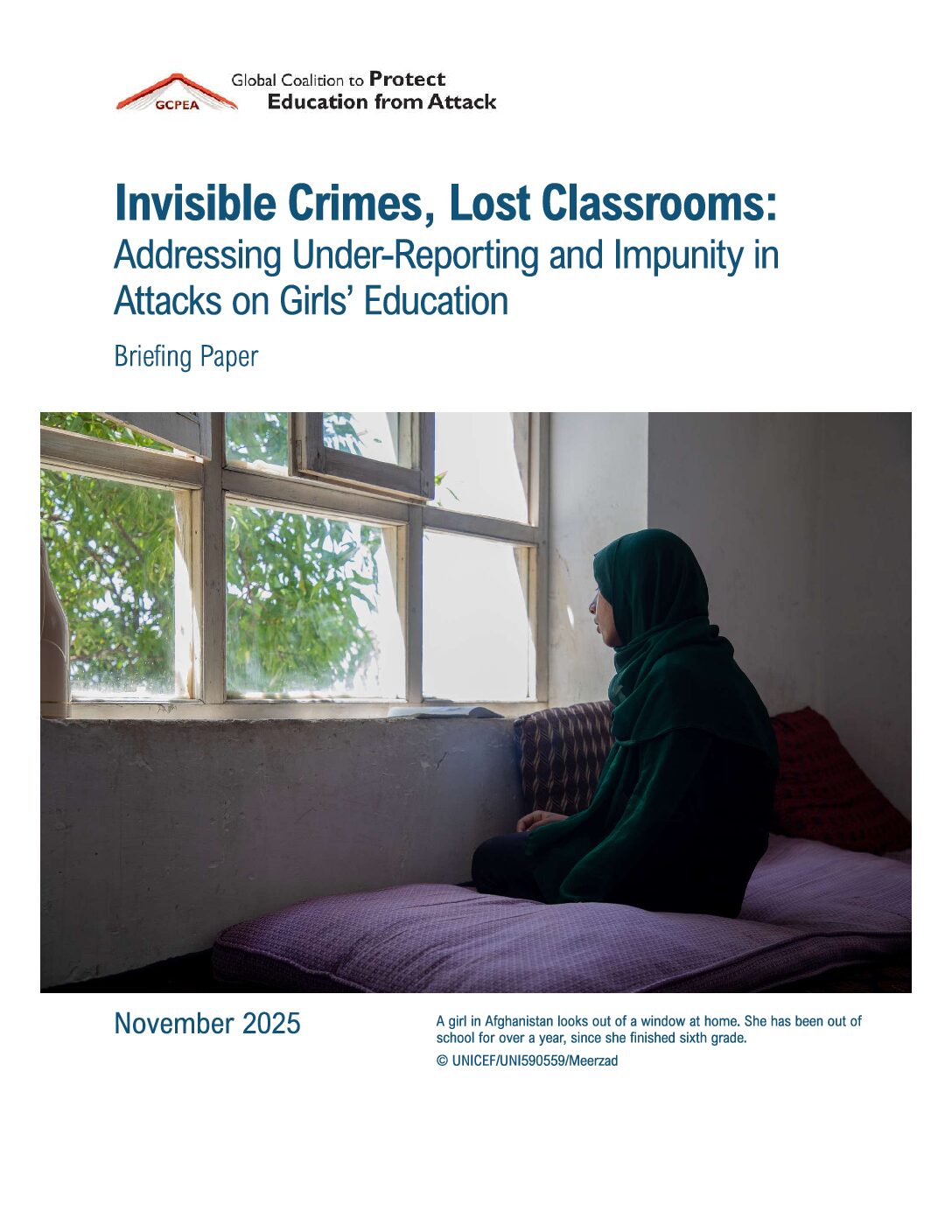GCPEA News
Protecting higher education from attack – Report
University World News, December 12, 2013
Violent attacks on higher education are a widespread problem affecting institutions and personnel worldwide, and governments should take responsibility for protecting them, says the Global Coalition to Protect Education from Attack in a report released this month.
The organisation said states should ensure that universities were spaces where professors and students were safe to teach, learn and research, and which were free from threats to their physical and psychological well-being.
Universities and their staff and students experienced violence, abuse and intimidation in nearly 40 countries between January 2009 and February 2013, according to the report Institutional Autonomy and the Protection of Higher Education from Attack.
It was commissioned by the Global Coalition to Protect Education from Attack, or GCPEA, which brings together the Council for Assisting Refugee Academics, Human Rights Watch, the Institute of International Education’s Scholar Rescue Fund, or IIE-SRF, the Scholars at Risk Network, Protecting Education in Insecurity and Armed Conflict, Save the Children International, UNICEF and the UN’s refugee agency UNHCR.
Worst cases
In Syria, 80 students were killed and about 200 injured in bombings while writing exams at the University of Aleppo in January, and another 12 were killed and 20 injured when a bomb hit the cafeteria at the University of Damascus last March.
On 29 September, 40 Nigerian students died at Yobe State College of Agriculture when armed gunmen, apparently from the Islamist group Boko Haram, stormed their dormitory while they slept.
In Pakistan, nationalist Baloch groups have been implicated in the assassination of university academics yet the government has done little to hold the killers accountable, the report said.
In the Philippines, state military forces shut down universities after attacks on army forces patrolling the campus of Mindanao State University.
And in Sri Lanka, the state used claims of student involvement in insurgency to place monitoring cameras on campuses and to arrest non-violent student protesters.
Throughout these regions, violent and coercive attacks on higher education appear to be triggered by a mix of student or faculty protest, state interventions and-or interferences by non-state groups.
The report also cited the conflict in Iraq that, according to an IIE-SRF report, had resulted in the targeting and killing of more than 550 professors, scientists and administrators in 11 years.
GCPEA also highlighted the case of two Pakistani professors killed in conflict in Balochistan province; a series of demonstrations protesting a ban on wearing Islamic head coverings, which turned violent and shut down classes at the Tunisian University of Manouba; and the arrests of a professor and student leader at the University of Zimbabwe in response to a lecture and film viewing on the Arab Spring.
In places like Latin America, with governments both holding more legal authority to intervene and being more inclined towards doing so, institutional autonomy is low. State security forces have intervened on campuses to conduct surveillance, arrest students and faculty and violently suppress protest.
And in Botswana, the directorate of intelligence and security, created in 2008 partly in response to student demonstrations, has been linked to abductions of student activists and death threats against lecturers and academics critical of government policies.
Institutional autonomy
According to the report, institutional autonomy is an internationally recognised condition of top quality higher education. States that acknowledge the autonomy of higher education institutions safeguard academic functions against outside interference and maximise educational and research outputs.
This also helps insulate higher education from politicisation and ideological manipulation, cementing a view of the higher education space as ‘off-limits’ to violent or coercive force.
Autonomy therefore has a protective function, safeguarding higher education institutions and personnel against attacks by state and non-state actors.
For example, European higher education today generally enjoys higher levels of institutional autonomy and physical security than most other areas of the world, including perhaps the United States.
A 2010 report by the European University Association, which ranks 29 European higher education systems according to the level of autonomy they have in each of four dimensions, testified to the highly developed understanding of autonomy in the region as well as to sector-wide efforts to understand, measure and promote it.
This did not mean European higher education is free from pressures on institutional autonomy – but the threats are more about issues of state interference through the withdrawal of financial support or the imposition of new restrictions or requirements on support that is provided, GCPEA found.
In France and Italy, for instance, the state provides significant support for higher education and controls hiring practices, university administrative appointments and infrastructure changes, all of which influence the quality and type of research pursued by institutions.
In Denmark, the higher education system is heavily state-centred. Although there are mechanisms limiting political involvement in decisions about curriculum, the number of courses and length of time necessary for graduation, the state has a point system for evaluating research productivity that is linked to future funding allocations.
While these examples might intend improving higher education functions, including efficiencies, research quality and accountability, they might also threaten institutional autonomy and academic freedom, the report argued.
As such, they might do more harm than good, exposing institutions to further and greater interferences in the future.
Yet admittedly these examples do not result from nor appear to contribute to the types of severe physical or coercive attacks on higher education institutions and personnel that are frequently experienced elsewhere.
Recommendations
In the report, GCPEA recommended steps governments could take to prevent attacks on students and faculty.
It said physical security on campuses could be beefed up by states, helping institutions to develop strong and independent security structures, taking action to prevent attacks by others, monitoring attacks and holding accountable those who carried out attacks.
It also said that to preserve the freedom and institutional autonomy of higher education institutions, their operations, instruction and research should remain free from interference by third party state and non-state actors.
These freedoms would “safeguard a university and its personnel from accusations of being linked to the agenda of any one particular political, ethnic or sectarian group”.
“Attacks on higher education undermine the system of education as a whole, right down to the primary level. A strong education sector relies upon teachers trained in colleges and research conducted in universities,” said Diya Nijhowne, the coalition’s director.
“Preserving robust higher education by ensuring that universities are both secure and free from political manipulation is essential for the development of stable, well-functioning societies.”
* The report was prepared by: Amy Kapit, lead researcher and a PhD candidate in the International Education Program at New York University’s Steinhardt School of Culture, Education and Human Development; Jodut Hashmi, researcher and PhD candidate at Harvard University’s Graduate School of Education; and Robert Quinn, research supervisor, editor and executive director of the Scholars at Risk Network.



